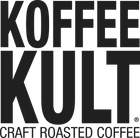Different Methods of Coffee Brewing and Ratios
Brewing the perfect cup of coffee has become an art form. From the grounds chosen to the water used, and even your coffee brewing method can affect the final taste of your coffee. Koffee Kult has created a guide to several methods of coffee brewing to explain the differences each method can produce. Coffee brewing is an ever-changing art form, but nevertheless, the perfect cup of coffee lies in the eye of the beholder.
-
Chemex. An old fashion coffee brewing method that follows the standard drip machine process. With an ideal ratio of 17 parts water to 1 part coffee, this method produces a smoother and purer tasting brew. The smooth texture is due to the thickness of the filter used with the Chemex compared to other brewing methods.
Benefits: You can make large batches of smooth coffee.
Cons: For coffee-beginners it can be a bit bitter to swallow.
-
French Press. An old-time, reliable friend that is there for you when you need them. Suggested ratio for a French Press brew would be a 1 to 12 coffee-to-water ratio. This method of coffee brewing can provide you with a more potent cup of joe, depending on your preference. For those who prefer coffee with a higher caffeine content, this method allows you to steep the grounds longer, creating a more caffeine enriched brew.
Benefits: produces strong coffee in a short amount of time.
Cons: Requires your attention while brewing, if you leave the coffee in the press for too long it will over extract and ruin a good batch.
-
The Pour Over Method. The pour over method resembles the standard drip method, but without any pesky machines in your way. All you will need are a few tools such as the Hario V60 brew guide and you can enjoy your morning coffee. This method allows you to experience the grounds blooming and becoming coffee. When using this method, the pour can affect the final taste of the coffee and it all depends on you. Try using a 1 to 15 coffee-to-water ratio and pour the water in a circular fashion to achieve a great brew.
Benefits: Flexibility to produce a single serve coffee portion or a carafe and quick brew time.
Cons: Requires your attention.
-
Cold Brew. A method of coffee brewing similar to the French Press but uses cold water to brew rather than boiling water. This method can take anywhere from 12 hours to 24 hours! For this coffee brewing method, it is best to use coffee beans that have been grounded very coarsely and a Toddy Cold Brew system. Finely ground coffee beans can leave you with a cloudy cup. Because coffee extracts better at higher temperatures, the coffee-to-water ratio for a cold brew is much larger. Try it at home using ¾ cup of beans for 4 cups of cold water.
Benefits: Produces a much smoother and sweeter brew than the typical hot brewed coffee.
Cons: Certainly, requires some planning ahead.
-
The Cowboy Method. The Cowboy method is one of the cheapest methods of coffee brewing. As a great way to get your caffeine fix while camping, the cowboy method uses no filters or strainers and produces a very bold and flavorful cup of coffee. As a guide, try using a 1 to 8 coffee-to-water ratio. So, for 2 tablespoons of coffee use 8 ounces of water.
Benefits: Cost efficient and easy to make. Helps get you out of a bind when you need caffeine.
Cons: Harsh, earthy, bitter taste and can leave behind grounds in your cup.























